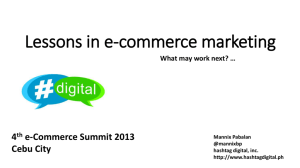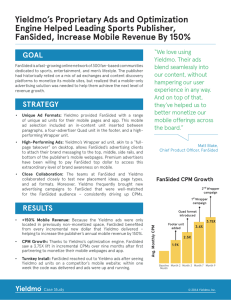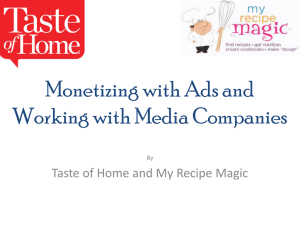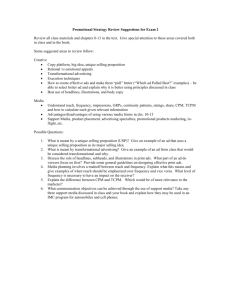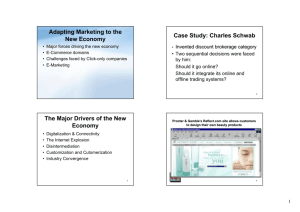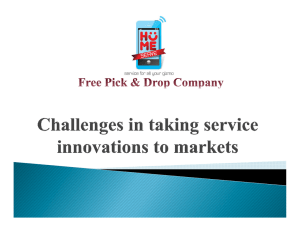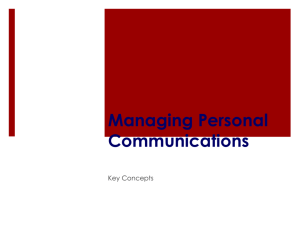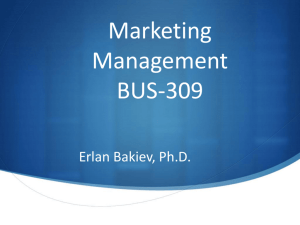Direct and Online Marketing
advertisement
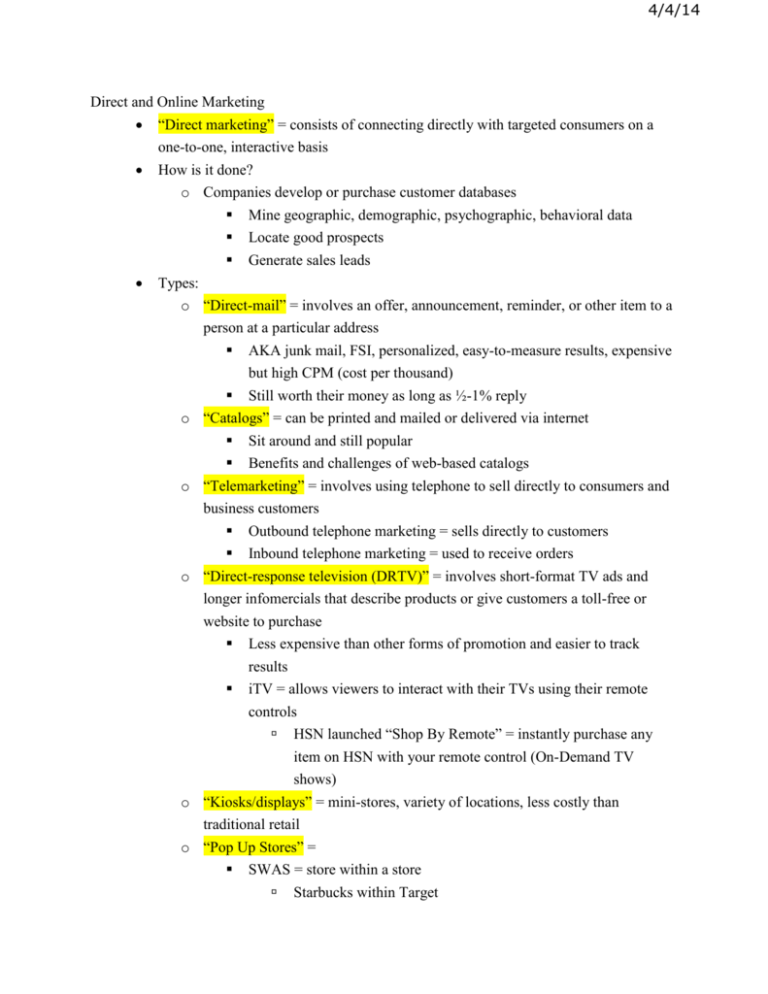
4/4/14 Direct and Online Marketing “Direct marketing” = consists of connecting directly with targeted consumers on a one-to-one, interactive basis How is it done? o Companies develop or purchase customer databases Mine geographic, demographic, psychographic, behavioral data Locate good prospects Generate sales leads Types: o “Direct-mail” = involves an offer, announcement, reminder, or other item to a person at a particular address AKA junk mail, FSI, personalized, easy-to-measure results, expensive but high CPM (cost per thousand) Still worth their money as long as ½-1% reply o “Catalogs” = can be printed and mailed or delivered via internet Sit around and still popular Benefits and challenges of web-based catalogs o “Telemarketing” = involves using telephone to sell directly to consumers and business customers Outbound telephone marketing = sells directly to customers Inbound telephone marketing = used to receive orders o “Direct-response television (DRTV)” = involves short-format TV ads and longer infomercials that describe products or give customers a toll-free or website to purchase Less expensive than other forms of promotion and easier to track results iTV = allows viewers to interact with their TVs using their remote controls HSN launched “Shop By Remote” = instantly purchase any item on HSN with your remote control (On-Demand TV shows) o “Kiosks/displays” = mini-stores, variety of locations, less costly than traditional retail o “Pop Up Stores” = SWAS = store within a store Starbucks within Target Stores that remain in place for only a short duration Ex: Halloween Store Direct Marketing Disadvantages: o Database Costs o Content Support o Image factors o “Do Not Contact” Direct Marketing Advantages o Targeted o Little Waste o o o o o Customization Flexible/Testing Cost (CPM) Effectiveness Relationship Building “E-Commerce” o Electronic commerce (AKA e-business) o Consists of buying and selling products or services over electronic systems such as the internet, WorldWideWeb o US #1, China growing quickly, India/Indonesia will also experience strong growth o Internet is helping create whole new business models: “Business to Consumer” E-commerce that takes place between businesses and consumers Internet influences over 50% of all US retail purchases “Business to Business” Involves exchange of products and services (info) between businesses on the internet “Consumer to Consumer” Involves consumers selling products and services to other consumers Ex: Ebay, Craigslist “Consumer to Business” Involves consumers providing input, feedback directly to businesses (Priceline, Complaints.com) Direct marketing – DRTV (direct television) In a magazine – coupons fsi free standing inserts Four business models C2b c2c b2b b2c On-line Marketing - web sites o creating a web site requires designing an attractive site and developing ways to get consumers to visit, use, and return to site often Sticky websites (websites that make people come back) Corporate web site is designed to build customer goodwill, and to supplement other channels by providing basic information about the company Mostly 1 way Marketing web site is designed to engage consumers and move them closer to a purchase or other marketing outcomes - - search advertising internet advertising o banners o ad podcast, vodcast, webcasts o k. Email provides about $40 for every $1 spent Social networks - allow members to congregate online and exchange views, common interests old spice ad agency expanded tv campaign with personalized YouTube videos delivered via twitter ads on social networks Google portfolio Search engine Mobile marketing Sending ads using the ip address that is on smart phones Nest ( On-line Tools

